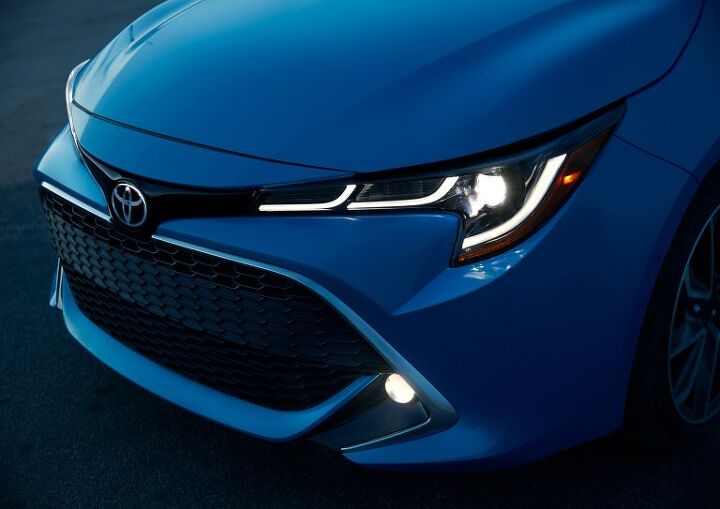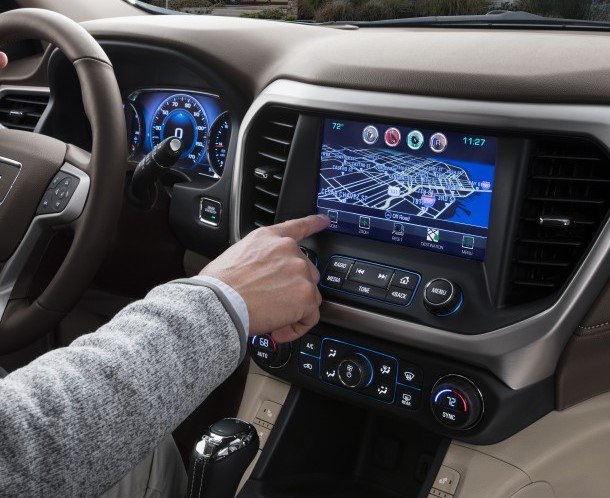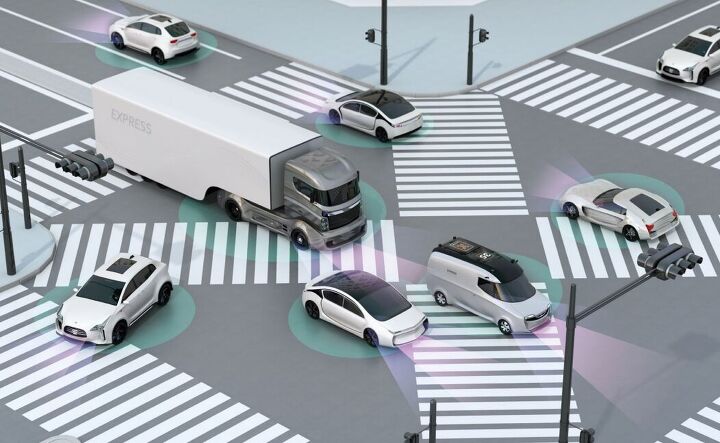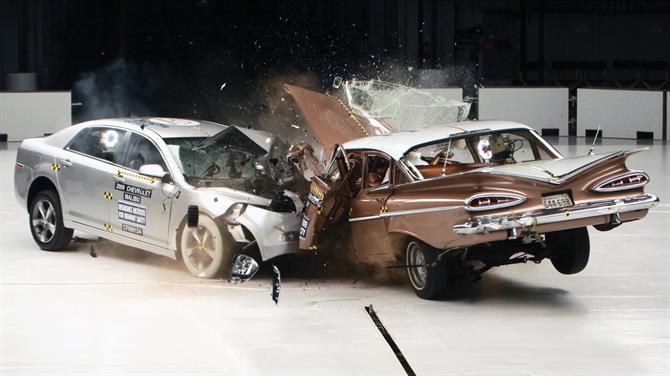#AdvancedDrivingAids
Toyota: Commercial Vehicles Come First for Autonomous Features
The perpetually cautious Toyota has decided to adhere to industry norms by promising to launch its latest advanced driving technologies on commercial vehicles first. This announcement works in tandem with the Toyota Research Institute-Advanced Development’s (TRI-AD), which has a fancy new headquarters focused on delivering “safe mobility by bridging Silicon Valley’s innovation with Japanese craftsmanship.”
The decision to prioritize commercial vehicles is relatively common. Most companies developing self-driving tech believe there are loads of cash to be found in autonomous taxi services and automated fleets. Large firms operating an entire fleet of AVs will also be better equipped to purchase and service them. Heavily dependent upon camera equipment and sensors, self-driving vehicles will need to be constantly maintained to ensure they are clean and functional. Toyota also sees possibilities in mobile shops and ambulatory hospitals, according to Reuters, which would require similarly high levels of attention.
Calling for Clarity: Auto News Requests Revised Terminology for Autonomous Tech
The terminology surrounding self-driving technologies and advanced driving aids has started to earn quite a bit of criticism in the wake of publicized crashes and growing outcry from consumer advocacy groups. For years, the industry has treated all assistance technologies as equal — placing everything on a sliding scale developed by SAE International.
It’s actually a good metric if you’re familiar with SAE’s autonomous ranking system. But to a layperson the differences between SAE Level 2 and 5 don’t mean a whole lot, despite offering completely different experiences. Automakers also have terms of their own, some of which could easily lead customers to believe their products are far more capable than reality allows.
Automotive News recently published an op-ed calling for clarity, and it was so good, we felt inclined to share.
States Begin Dealing With Driving Data, Right-to-Repair Laws
In reading this website, you’ve no doubt come across paranoid rants about automotive companies vacuuming up your personal data as connected cars become the norm — often written by yours truly. Frequently bleak, they address a multitude of concerns we believe will only get worse before they can get better.
A large part of that has to do with automakers seeing the potential of leveraging customer data, like so many tech companies have before them. But elected (and unelected) officials also seem to have a loose grasp of the technology and its potential ramifications. When the Department of Transportation initially approved self-driving vehicles for public testing, the guidelines were loose and largely dependent upon self-reporting — few wanted to stand in the way of developing systems that might someday save lives.
However, manufacturers are now beginning to issue over-the-air updates, perpetual internet connectivity, gamification, and in-car marketplaces (complete with advertisements). While the new technology has opened up new doors for customer experiences and corporate revenue, it’s accelerating at a pace that’s difficult to track. As a result, lawmakers in Massachusetts and California are starting to get antsy. The former hopes to address how data will be handled in accordance with the state’s right-to-repair laws. The latter is more directly concerned with privacy.
More Evidence Pedestrian Detection Systems Have Some Problems
It hasn’t even been a full month since the American Automobile Association (AAA) released a study showcasing the shortcomings of advanced driving aids and another damning report has come in — this time from the Insurance Institute for Highway Safety (IIHS). While not nearly as bleak as the AAA study, the IIHS research put several models on blast for having lackluster equipment.
The gist appears to be that the quality of pedestrian detection systems varies wildly between models, with the IIHS picking a few winners and losers. That’s important information to have, especially considering automatic braking systems will be standard equipment on all cars by 2022.
Reportedly Terrible: AAA Tests Pedestrian Detection Systems
The paranoid luddites that write for this site have occasionally been accused of being hyper critical of modern-day driving aids. Be it a cursory mention of how a little snow totally flummoxed the systems of an otherwise agreeable review car, the direct addressing of an issue where road salt encouraged a vehicle to attempt to steer itself into a ditch, or one of this author’s many diatribes on how the bulk of this technology doesn’t seem anywhere near market ready, there’s always a couple of exceptional individuals ready to call us backward-looking morons.
While that’s often a correct assessment in other matters, it seems we’ve called this one correctly. The American Automobile Association (AAA) recently tested four sedans from competing manufacturers, running them through a handful of scenarios intended to replicate situations that place pedestrians at extreme risk. Taking into account the above smugness, you can probably imagine how poorly it went.
Survey Suggests Most Motorists Dig Advanced Driving Aids
A survey released by Consumer Reports this week indicated that a majority of motorists (57 percent) believed that the advanced driving aids their vehicles had actively helped them avoid a crash. The survey, which incorporated data on roughly 72,000 vehicles from the 2015-19 model years, asked drivers to weigh in on a multitude of safety systems — including forward collision warning, automatic emergency braking, blind spot alerts, and more. While not all of these features had majority support, tabulating them as a whole showed at least half of the people using advanced driver assistance systems (ADAS) saw some value in them.
Our opinions on these systems have been thoroughly mixed. While we’ve found most advanced driving aids to be inconsistent in their operation, sometimes befuddled by fog or a vehicle encrusted with roadway grime, we’ll happily admit that adaptive cruise control offers more utility than the standard on/off inclusions of yesteryear. But we’ve also seen disheartening reports that semi-autonomous features dull a good driver’s senses to a point that effectively makes them a worse motorist and would be lying if we said we trusted any of these systems implicitly.
Some Drivers Still Oblivious About Automated Systems, IIHS Faults the Name Game
Many consumers continue to misunderstand the driver-assistance technologies being placed in modern vehicles, according to the latest survey released by the Insurance Institute for Highway Safety. But we don’t need the IIHS to tell us that. We’ve been documenting the avoidable accidents created whenever motorists overestimate what their high-tech cars are capable of for years now.
However, the insurance institute and numerous consumer advocacy groups have suggested that big part of the problem stems from the names manufacturers are using to describe their semi-autonomous hardware. Titles like “Autopilot” or “Driving Assistant Plus” can be confusing to somebody who didn’t bother to read the manual, especially when the associated marketing materials are often helping to steer them further in the wrong direction.
Sunshine Can Sabotage Cadillac's Super Cruise; GM Reportedly Working On Fix
Despite receiving high praise as one of the most advanced driving aids on the market, Cadillac’s Super Cruise isn’t perfect. Automotive writers frequently debate whether it’s superior to Tesla’s Autopilot, without reaching a consensus. Most experiences have shown Tesla to have the more hassle-free interface with Cadillac providing something that errs on the side of caution. Similarly capable, Super Cruise is more persnickety about where and when can use the system — not a terrible impulse, especially considering how all modern driving aids can be flummoxed by a little salt and snow.
However, one gripe we’ve repeatedly heard about Super Cruise was that the system sometimes didn’t make it clear why it isn’t operating. General Motors has identified the problem and says it plans to implement a fix, but it might only come with the next generation of the company’s semi-autonomous hardware.
Here's Looking at You, Kid: Volvo to Deploy In-car Cameras to Monitor Your Behavior
Volvo has burdened itself with the unrealistic duty of ending fatalities in its cars. While an admirable goal, eliminating roadway mishaps in their entirety is an exceptionally tall order. We’ve often wondered how the company intends to progress toward its zero-death target. The automaker has already said it intends to reduce speeding by limiting the top speed of all models to 112 mph.
On Wednesday, the company said it will introduce an orange “Care Key” that allows owners to apply whatever maximum velocity they desire (below 112 mph) and an in-car camera system designed to keep you from misbehaving behind the wheel. Volvo’s commitment to safety seems to exist without boundaries, but it leaves us wondering how far is too far.
40 Countries Agree - Automatic Braking Should Be Mandatory
Forty countries, led by Japan and the European Union, have agreed to require passenger cars and light commercial vehicles to come equipped with automated braking systems starting as soon as 2020.
According to the United Nations Economic Commission for Europe (UNECE), the new regulation will become compulsory for all countries that adopt it during an upcoming June session. However, the measure will only apply to vehicles operating at “low speeds,” which the U.N. claims is anything under 42 mph.
AAA: New Safety Tech Effectively Doubles Cost of Minor Repairs
Advanced safety tech may save your skin, but it certainly won’t spare your wallet in the event of a minor accident. According to research from the American Automobile Association, replacing and/or recalibrating the sensors needed to allow modern driving aids to function properly are severely inflating the cost of even minor repairs.
Unfortunate, considering features like blind spot monitoring and automatic emergency braking are cropping up as standard equipment on even the most affordable rides. Car ownership continues to get more expensive and there doesn’t seem to be much we can do about it — with one exception.
Scary Stats: Drivers Don't Know Jack About the Tech In Their Car
Over the weekend, I found myself conversing with a young woman who admitted to being slightly creeped out by modern automotive technology. She had a bone to pick with everything from push-button ignitions to adaptive cruise control. It was surprising admission from an individual who is planted squarely in the middle of the Millennial age bracket and has no serious interest in cars, but one I’ve been hearing more often lately.
The American Automobile Association seems to be rather touchy on the issue, as well. Much of its interest in the subject revolves around present-day tech lending itself to distracted driving, something it is firmly against. But the AAA Foundation for Traffic Safety appears absolutely convinced that the introduction of advanced driver assistance systems will save lives. However, it also believes that its full potential won’t be unlocked until consumers accept these technologies, understand how to use them, use them as intended, and avoid misusing or becoming over-reliant on them.
Frankly, that sounds like wishful thinking. So long as advanced driving aids exist, they’ll probably be misunderstood and misused. People don’t even use their turn signals correctly, for Christ’s sake.
Toyota's Self-driving Car Plan Still Incorporates the Driver, Calls Bullshit on Level 5 Autonomy
Despite being one of the largest manufacturing giants currently in existence, Toyota is trailing in the autonomous technology war currently raging among carmakers. But it would unfair to say that the Japanese brand is losing. While General Motors appears to lead the rest of the established automotive firms, it’s not perfectly clear how big a gap it made for itself. Meanwhile, Toyota spent the last few years taking a more cautious approach, without ever ignoring the possibility of an autonomous future.
In 2015, the automaker decided to get serious, saying it would invest billions of dollars into the Toyota Research Institute. The goal? To advance robotics and artificial intelligence to a level where it could test an autonomous vehicle by 2020. But Toyota remains skeptical of the rest of the industry’s progress on self-driving cars.
“I need to make it perfectly clear, it’s a wonderful, wonderful goal,” Gill Pratt, the CEO of the Toyota Research Institute said at CES 2017. “But none of us in the automobile or IT industries are close to achieving true Level 5 autonomy, we are not even close.”
NHTSA Deputy Administrator: There's No Need to Regulate Autonomous Cars
Heidi King, deputy administrator of the National Highway Traffic Safety Administration, claims it’s too soon to begin imposing rules on self-driving vehicles. Thus far, the NHTSA as taken a supremely lax posture on handling autonomous vehicles in the hopes that a softer touch will assist in their swift development.
However, a cluster of fatal incidents involving advanced driving technology created fresh paranoia within the government.
While the argument could be made that those accidents demand a response from federal regulators, it’s also clear the government doesn’t have a firm grasp on the technology. Likewise, there’s little consensus among automakers that have only recently begun discussing how these vehicles should be standardized, and loads of conflicting opinions exist on the matter of safety. In the short term, advanced electronic aids allow motorists to become worse at driving. But, if fully autonomous vehicles function as intended, their long-term safety benefits could be immense.
The NHTSA claims the resulting confusion means it’s too early in the process to make any kind of definitive rulings.
NHTSA Study Confirms New Cars Are Safer, Regulations Not a Scam
You might want to sit down for this one. The National Highway Traffic Safety Administration (NHTSA) released a study this week showing older cars without modern day safety hardware are — and I’m sorry to say this — far more dangerous than newer vehicles. Unbelievable, right?
Of course not. As tacked on and obnoxious as a lot of safety regulations often seem, they are delivering onto us safer automobiles. The old maxim of “they don’t build cars like they used to” is absolutely true, but not in the way your grandfather meant it. According to data compiled from the U.S. government’s Fatality Analysis Reporting System (FARS) between 2012 and 2016, fatal incidents occurred in older model-year vehicles at a much higher rate than their newer counterparts. Not surprisingly, the NHSTA also suggested the severity of an occupant’s injuries increase the older a vehicle gets.
Still, the disparity between the vehicle age groups is surprisingly vast.






























Recent Comments